Landscaping Resources
Native Plants & Wildflowers
A guide for landscape architects, biologists, gardeners and developers
Native plants can play an important role in gardens and landscaped areas. Because they are adapted to local conditions, native plants are often more drought-tolerant, easier to care for, and have greater disease resistance than many traditional garden plants. People who grow these plants have the satisfaction of knowing that they are preserving local heritage, being water-wise, and are improving the biodiversity of their communities.
Native wildflowers can be an attractive way to add native plants to a home garden. Many also provide food for birds, butterflies and several species of beneficial insects. Several eye-catching perennial wildflowers are shown here. All of the plants listed here are known to be native to Richmond, but are becoming increasingly scarce due to changes in the landscape and the presence of introduced plants and weeds.
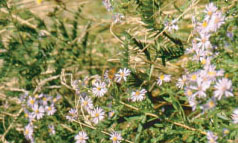 |
Douglas Aster Aster subspicatus Likes moist growing conditions in open areas such as meadows, clearings and along streambanks. Attracts butterflies. Blooms August to September. |
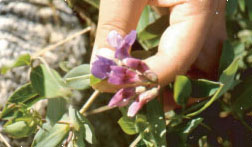 |
Beach Pea Lathyrus japonicus Grows in open, sandy area. Attracts bees, wasps, and butterflies. Blooms late spring to summer. |
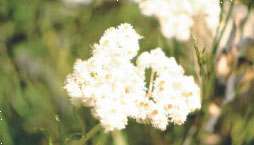 |
Pearly Everlasting Anaphalis margaritacea Grows well on rocky slopes and open areas, likes meadows, clearings and roadsides. Blooms summer to late autumn. |
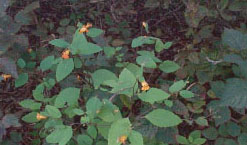 |
Jewelweed (Common Touch-me-not) Impatiens capensis Annual. Grows in moist, shady spots. Attracts beneficial insects. Blooms in late summer. |
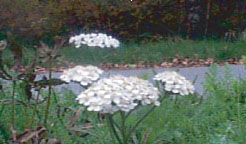 |
Yarrow Achillea millefolium Grows in open sites under most conditions. Attracts butterflies, ladybugs, hoverflies, parasitic mini wasps, and hummingbirds. Provides food for rabbits. Blooms June to August. |
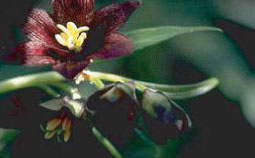 |
Black Lily Fritillaria camschatcensis Grows in moist open places. Attracts pollinating flies. Edible bulb. Also known as Northern Rice Root. Blooms in spring. Photo: Ulrich Gaede |
More Wildflowers
- American Vetch Vicia americana
- Arum-leaved Arrowhead Sagittaria latifolia
- Broad-leaved Starflower Trientalis latifolia
- Canada Goldenrod Solidago canadensis
- Cooley's hedge nettle Stachys cooleyae
- Cow Parsnip Heracleum lanatum
- False Lily of the Valley Maianthemum dilatatum
- Field Mint Mentha arvensis
- Fireweed Epilobium angustifolium
- Giant Vetch Vicia gigantea
- Large-leaved Avens Geum macrophyllum
- Large-leaved lupine Lupinus polyphyllus
- Marsh Cinquefoil Potentilla palustris
- Pacific Bleeding Heart Dicentra formosa
- Pacific Water Parsnip Oenanthe sarmentosa
- Silverweed Potentilla anserina
- Skunk Cabbage Lysichiton americanum
- Yellow Pond lily Nuphar polysepalum
- Yellow Willowherb Epilobium luteum
- Youth-On-Age Tolmiea menziesii
Note: American Vetch, Cow Parsnip, Large-leaved Lupine, and Pacific Water Parsnip are either toxic or contain chemicals which could adversely affect humans or animals.
Planting Information
When planting native plants in your garden, it is important that you choose plants which will suit the type of soil you have, and which will like the moisture regime of your garden.
If you are trying to grow native plants from seed, subjecting the seeds to a period of cold before planting may help speed germination. The easiest way to do this is to place the seeds in a moist medium (peat moss, sand, paper towel, etc.) in a plastic bag and then keep them in the refrigerator for several weeks. Seeds with a hard outer coating may benefit from being rubbed lightly with sandpaper before being refrigerated.
Note: Most of the plants listed here are not particularly suited to bogs.
For more information, visit Gardening in a Changing Climate.
Tree Information
For more information regarding tree removal and suitable trees for replanting, visit Tree Protection Bylaw.

